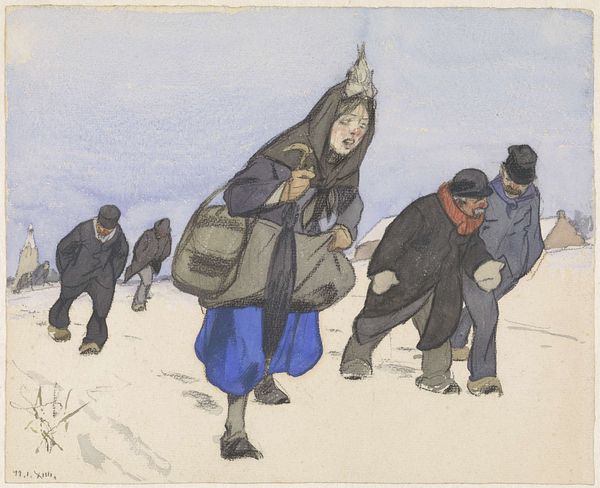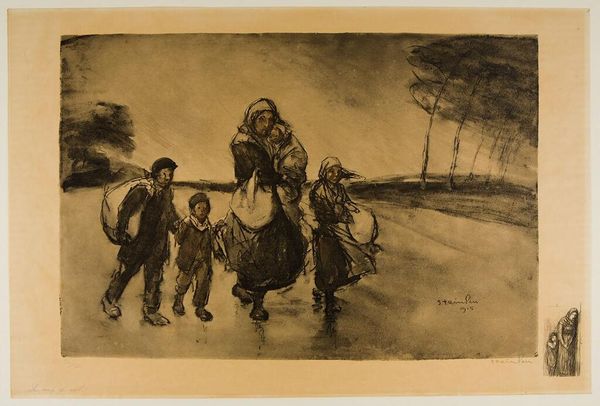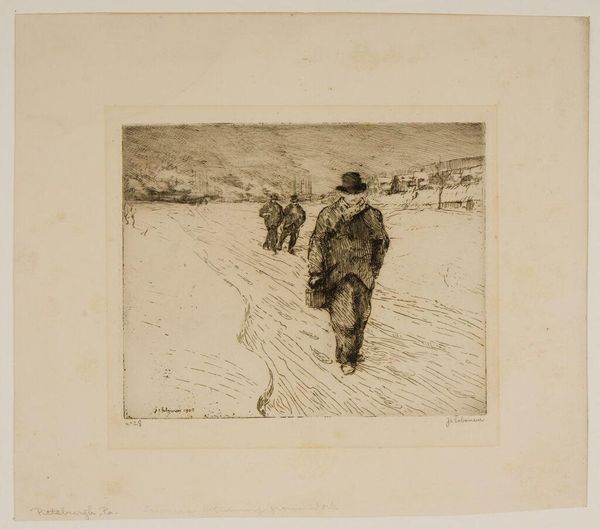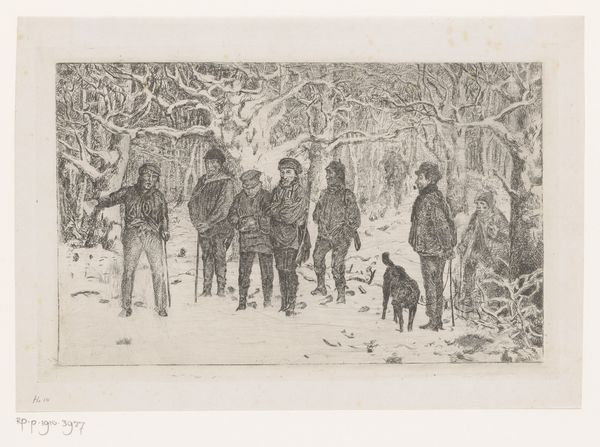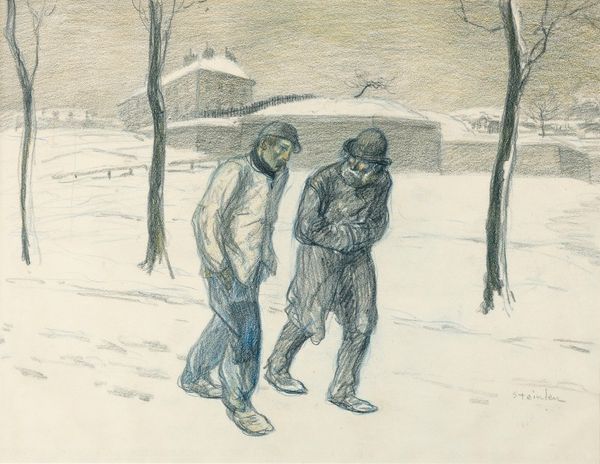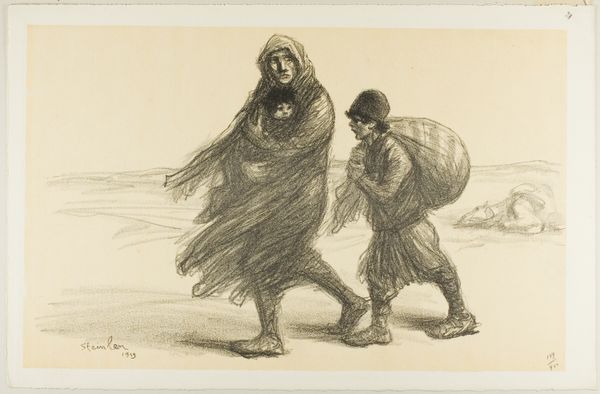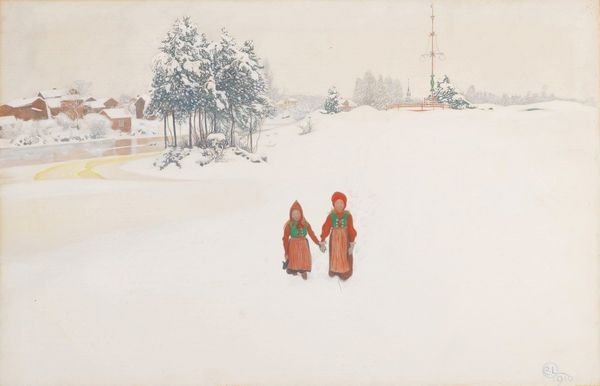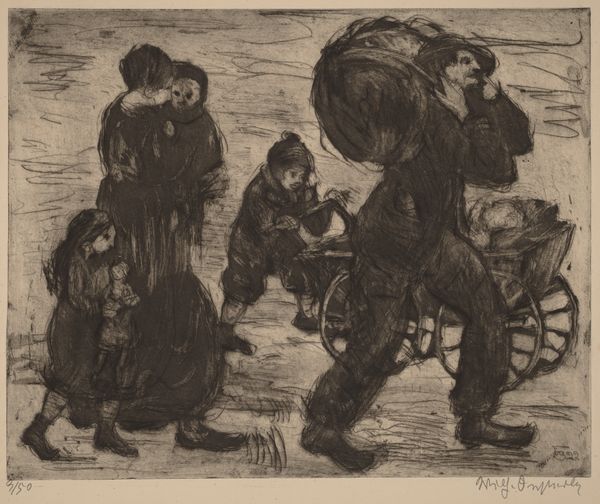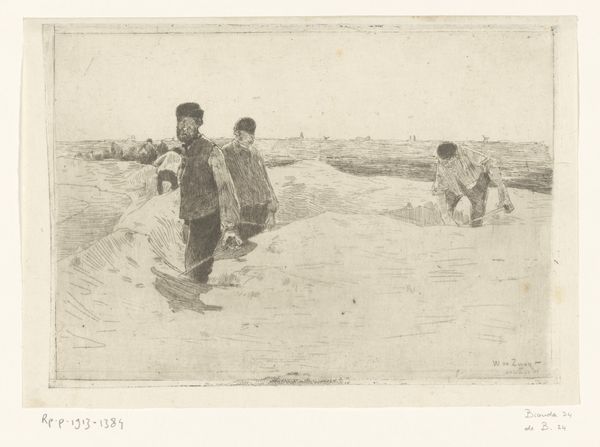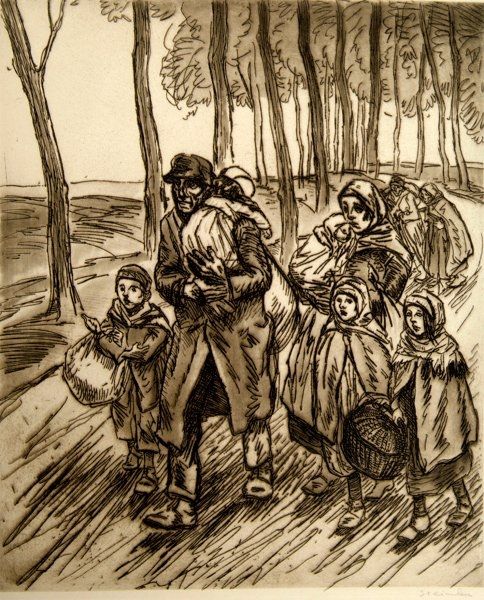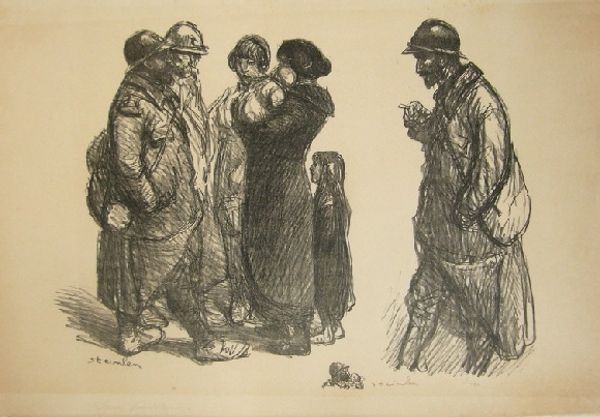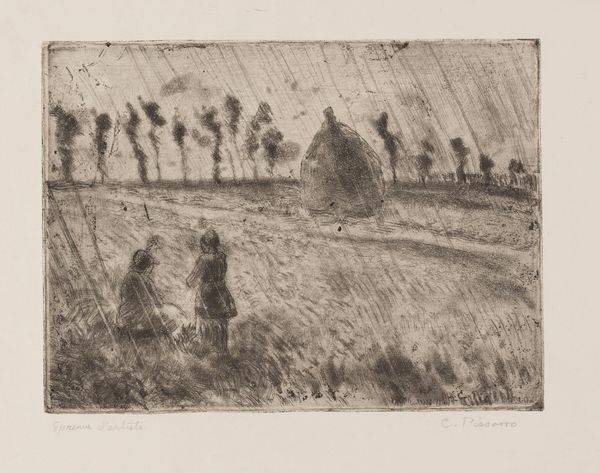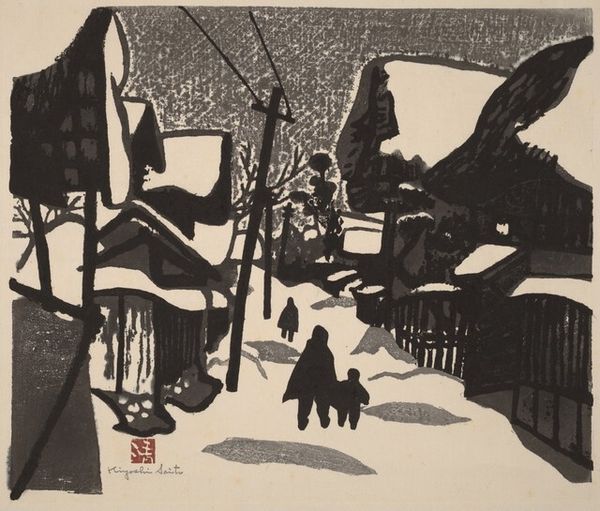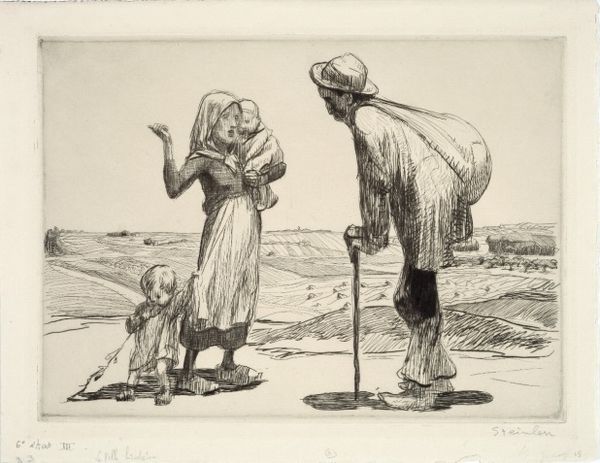
Dimensions: height 452 mm, width 556 mm
Copyright: Rijks Museum: Open Domain
Theo van Rysselberghe made this print of a family walking along a country road with lithographic crayon. The scene presents a working-class family trudging along a nondescript road, perhaps in Belgium, where the artist lived. The lack of idealization is typical of the late 19th century, when artists started to use printmaking to address a broader public. Visual codes of the time meant that stark depictions of rural life and the working class tended to represent the social inequities of industrial society. The image subtly comments on the social structures of its time by evoking sympathy for those who did not enjoy the benefits of wealth. In order to further understand this artwork, a social historian might research the history of the print market, looking at exhibition records and sales figures to understand the public for this kind of image. The meaning of art is always contingent on social and institutional context.
Comments
No comments
Be the first to comment and join the conversation on the ultimate creative platform.
